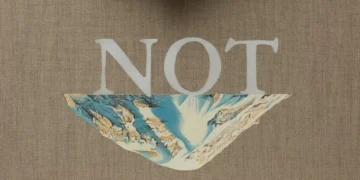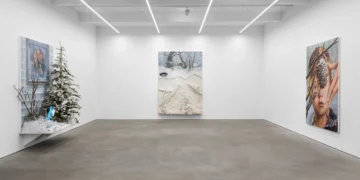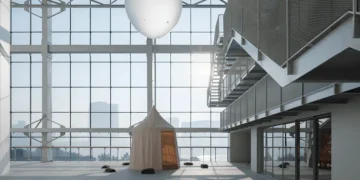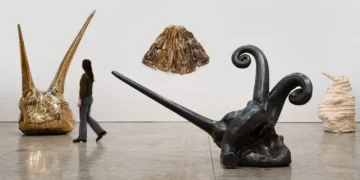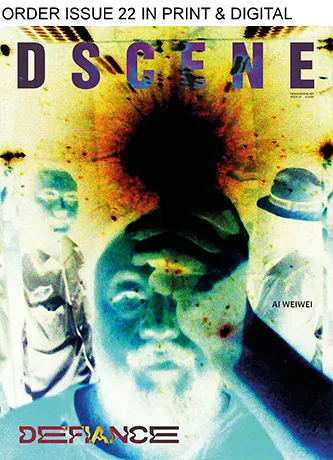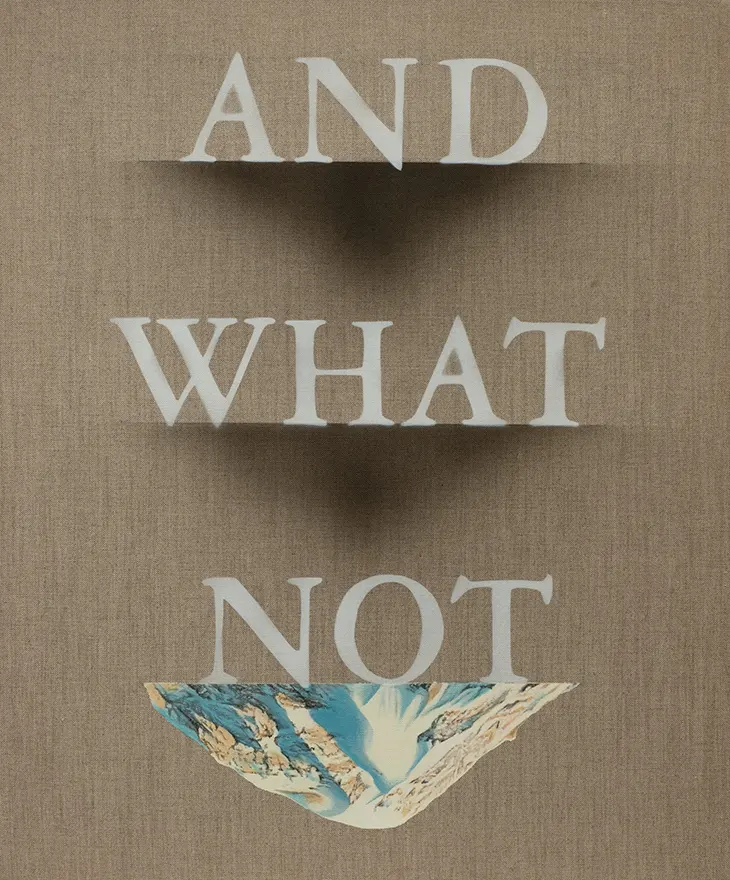
Ed Ruscha’s sharp interrogation of language and image enters a new chapter this autumn with Says I, to Myself, Says I, his first exhibition dedicated to paintings on unprimed linen. Opening October 14 at Gagosian Davies Street in London, the show runs until December 19, 2025, and coincides with Talking Doorways, another Ruscha exhibition at Gagosian Paris from October 22 to December 3. Together, these parallel presentations reinforce Ruscha’s influence as one of the most enduring voices in contemporary art.
ART
Ruscha began experimenting with raw linen supports in the early 1990s, but until now they remained a quiet current within his larger practice. The ten new works unveiled in London position the linen surface as an active participant rather than a passive ground. Its rough texture creates friction against the crisp, serifed lettering that stretches diagonally or horizontally across the canvas. The contrast between word and material surface sharpens perception, as though language itself resists permanence when anchored to such unrefined fabric.
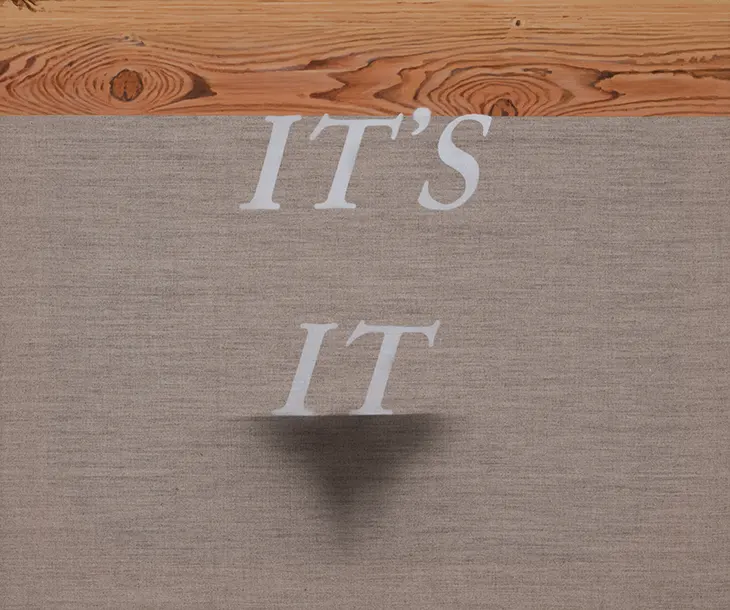
The paintings frequently use tapering black shapes beneath the white letters, turning words into architectural structures that seem to hover, casting imagined shadows. The diagonal tilt of works such as Says I, to Myself, Says I (2024) charges the text with urgency and momentum, while the geometric extensions amplify its rhythm. The phrase itself, drawn from folk vernacular and colloquial sayings, suggests a moment of self-reflection, language talking back to itself.
Ruscha’s ongoing fascination with how words and pictures alter one another’s meaning remains at the forefront. In It’s It (2024), the doubled pronoun strains to define something unnamed, its ambiguity underscored by the presence of a wooden plank, an echo from his Tom Sawyer paintings of 2022. Elsewhere, mountain peaks appear once again, but this time not as distant settings for text as in his Mountain series, but as painted forms replacing abstract geometry. These motifs fold Ruscha’s past bodies of work into his present, layering reference on reference.
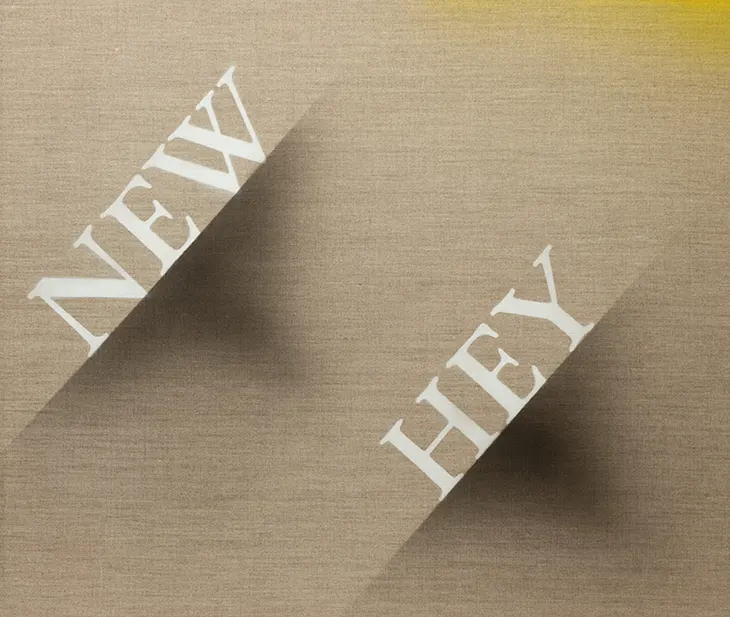
For decades, Ruscha has extracted ordinary language from its functional role and placed it under the scrutiny of painting. His serif typography, clean yet weighted, imbues words like “New Hey” with unfamiliar force. By stripping phrases of context and setting them against unprimed linen, he prompts viewers to encounter them as strange, slippery, and mutable. Each work functions as both image and proposition, as though daring the viewer to locate meaning in repetition and shadow.
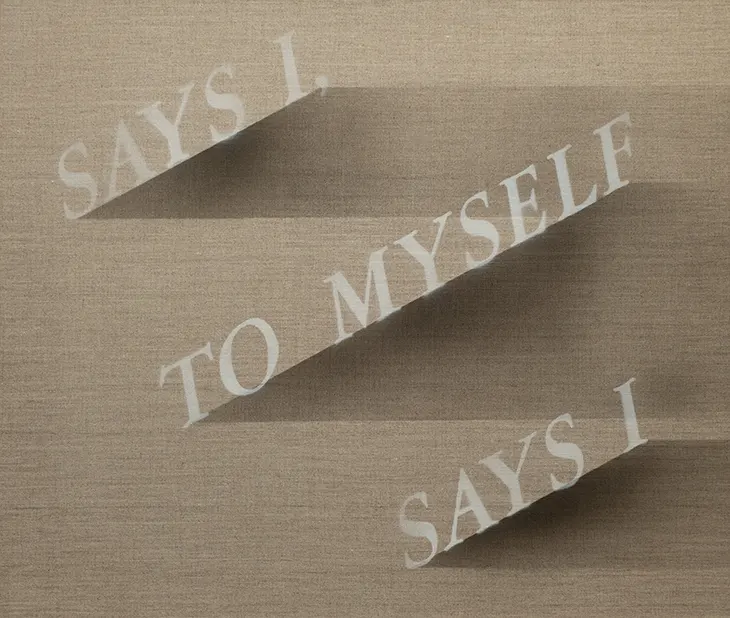
To accompany the exhibition, Gagosian will publish a catalogue exploring this new chapter in Ruscha’s practice. Taken together with Talking Doorways in Paris, Says I, to Myself, Says I marks a rare opportunity to view the artist’s evolving dialogue with materials, symbols, and everyday vernacular. The London exhibition consolidates Ruscha’s long-standing preoccupation with words as images but also introduces a raw material surface that underscores the instability, and the possibility, embedded in language itself.
